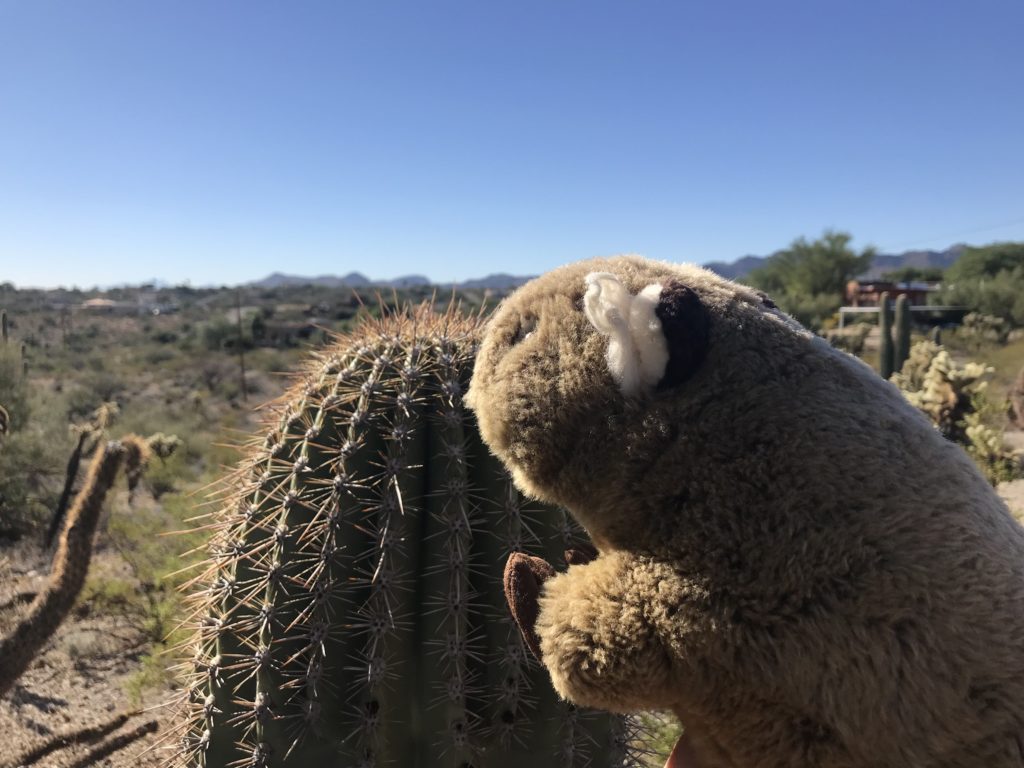
This is the first in a series of seven articles about my 9 month trip through the Southern US.
I lived in Tucson from October 2021 to January 2022. These are my thoughts.
Suburbs in the Deep Desert
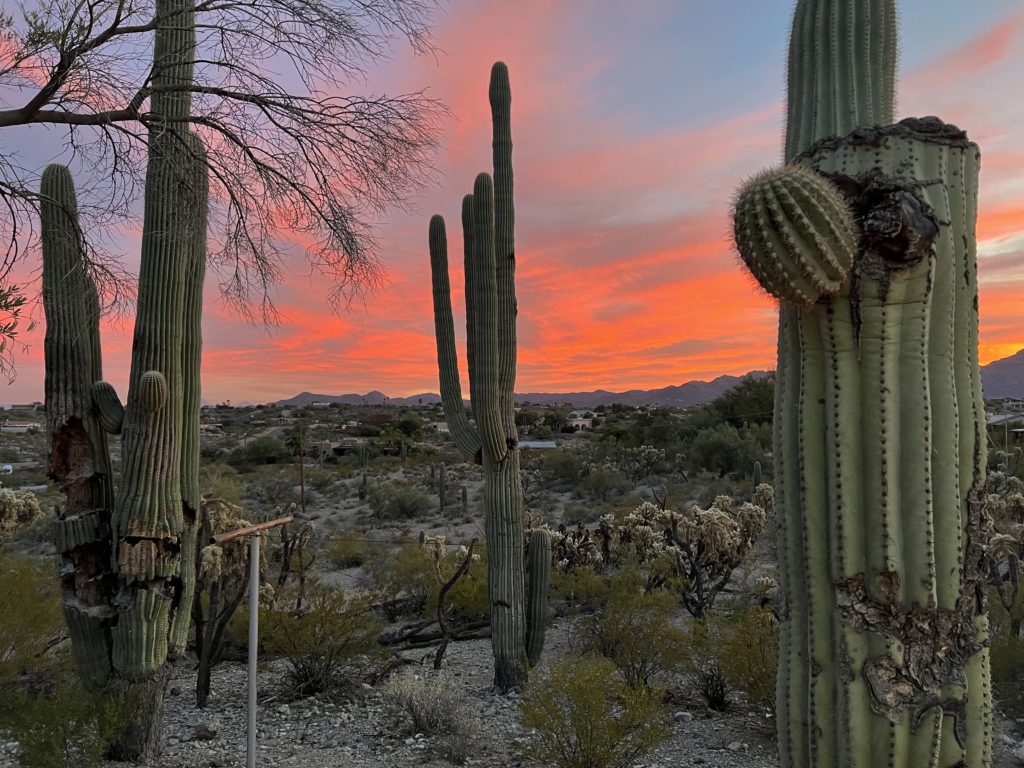
I spent most of my time in the a Western suburb of Tucson near Saguaro National Park. Although it was a suburb, it felt like I was deep in the quiet of the desert. There must have been nearly a mile of desert from my backyard to the next house I could see. Coyotes, javelinas and mule deer often passed by my window in the mornings.
Javelinas
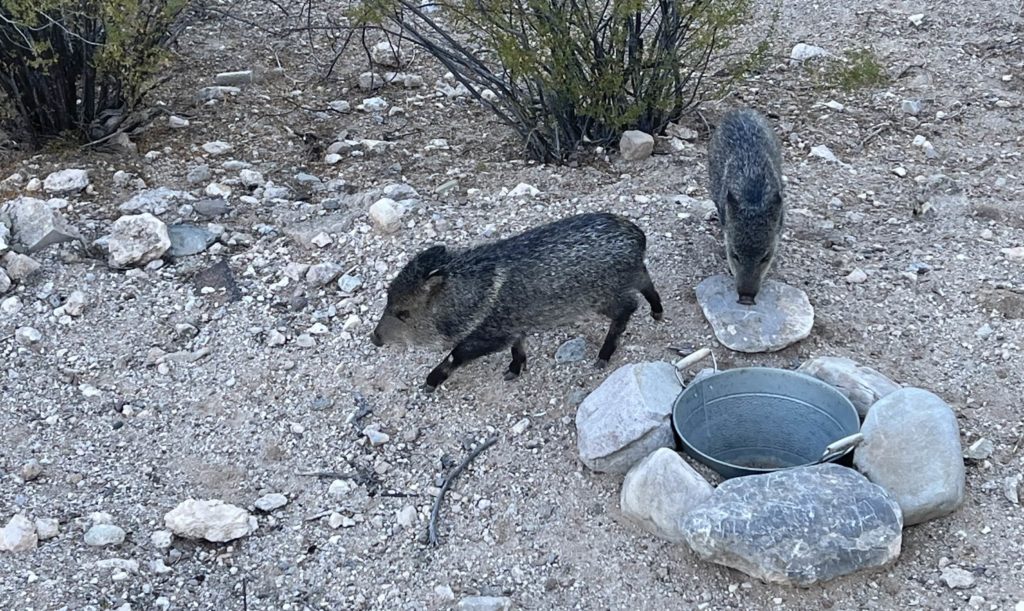
It was hard not to get excited every time I saw a javelina trot across the road, as they were definitely a novelty for me. I learned, however, that the locals like them a lot less than I do. These boar-like creatures can get rather aggressive, and will attack dogs and the owners of dogs. Indeed, I did have a encounter with a very large adult Javelina when I was jogging and the creature gave me the “you better not mess with me” look as it crossed the road. So perhaps my enthusiasm for these cute deer pigs might get tempered over time should I have decided to live in Tucson longer.
Neat looking houses
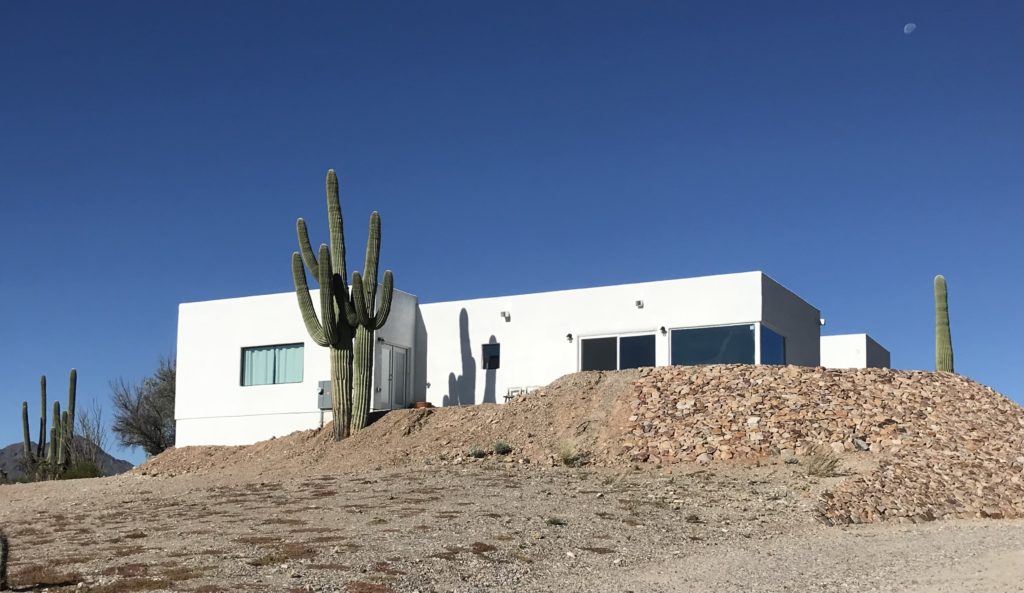
Oftentimes in place of a green lawn and a McMansion you’d instead see a mob of cacti standing guard in front of a boxy, whitewashed one story house in the pueblo revival style or some variation thereof. There’s something about these houses that can capture both humility and grace in a way that seems appropriate to the starkness of the desert.
We are the interlopers here
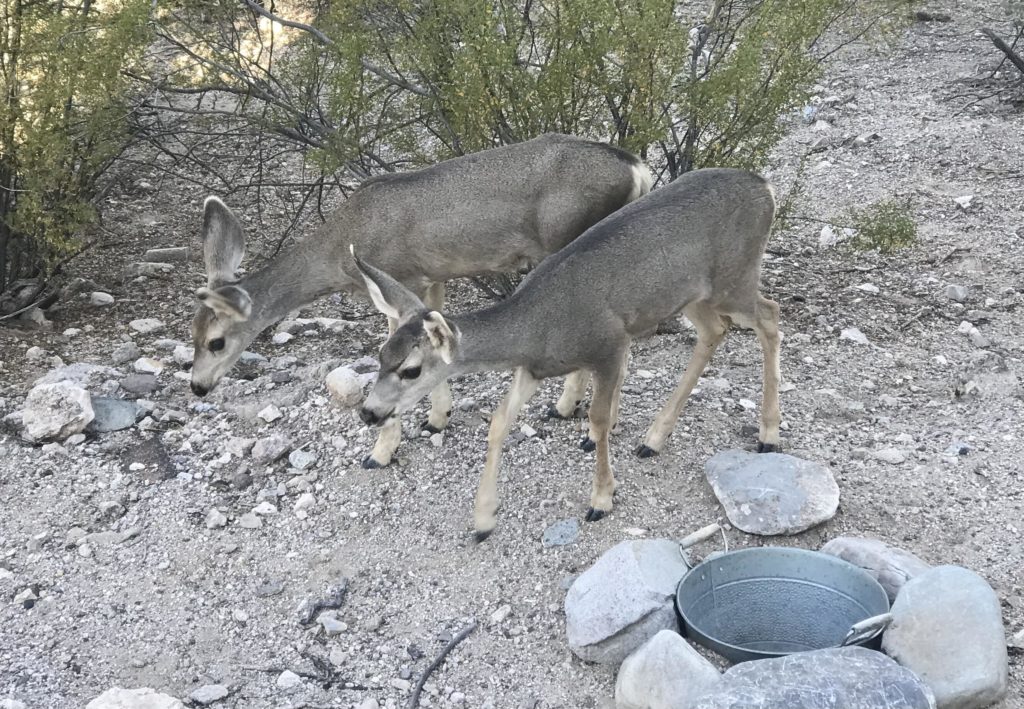
What strikes about the desert is that it can’t be displaced by human settlements as easily as other environments. The desert is so extensive that even in the suburbs there are square miles of uninhabited desert between houses. This is not to say that humans don’t affect the desert in many harmful ways through climate change and poor water conservation, but they can’t displace the the creatures from the land as easily.
Never in all the places I have lived have I had so many encounters with the local wildlife. After a while you get the sense that you’re not really living in the suburbs but permanently glamping. Sure you have water and electricity and refrigeration, but you are a guest here. You’re the interloper.
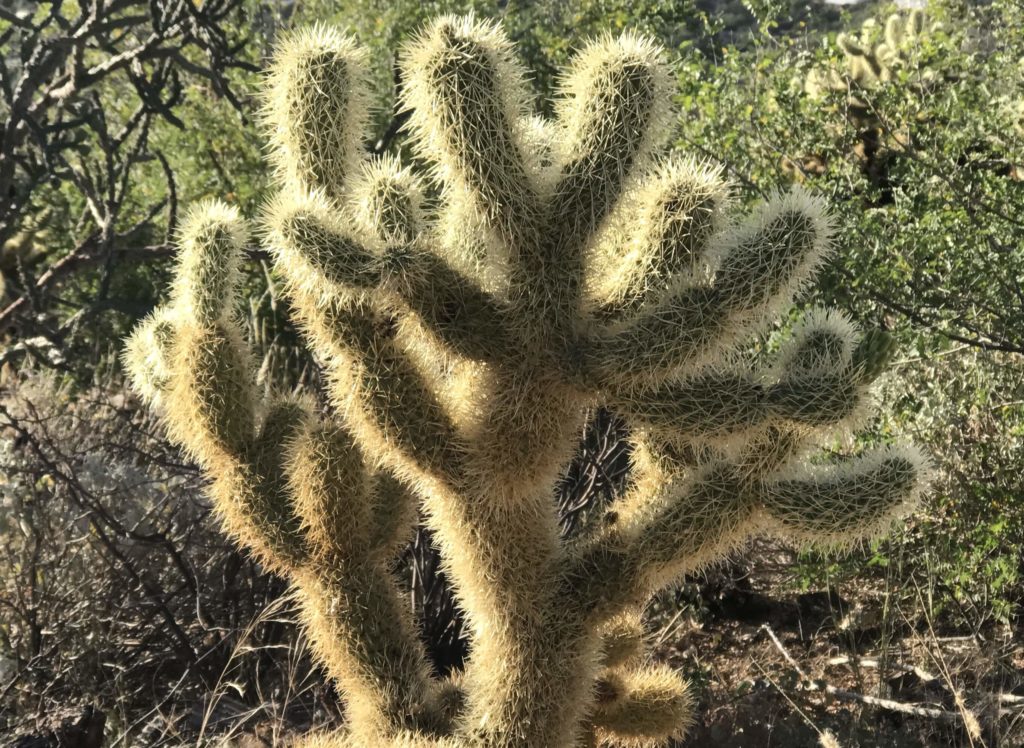
Welcome to Arizona, Please Roll for Initiative
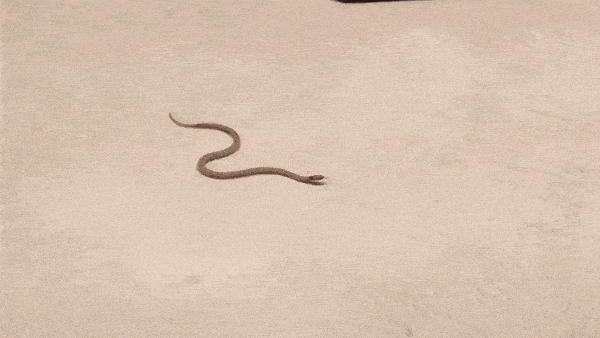
In most places in the US, you rarely need to roll for potential combat encounters. This is not the case here. In fact, one day when opening my door I saw a baby rattlesnake sidewinding its merry way across the floor of my Airbnb. Because of its size and the fact that it didn’t seem to have a rattle, I figured it was some some harmless non-poisonous snake. In one of my less brilliant moments, I tried to get it out of the house using a dustpan and broom. I was lucky I didn’t get bitten. Since sidewinders are apparently rather cowardly, it coiled up into a little ball in response to my provocations instead of lashing out to bite me.
Not wanting to bother my Airbnb hosts late in the night. I went to bed and informed them first thing in the morning. I learned that it was in fact a baby rattlesnake, and we upended the entire guestroom looking for it. We couldn’t find the little guy and assumed he left from where he came in (probably a gap in the back door). We sealed up the gap with a towel and I tried not to think about it after. I’m usually a shoes off indoors kinda guy but I left my shoes on for the rest of my stay in Tucson.
When I shared this story with locals, they were quick to inform me that baby rattlesnakes were more dangerous than the adults because they can’t control their venom. This is apparently a myth, but every every time I mentioned that I’d get raised eyebrows in response as they likely didn’t believe me.
The weather
After having suffered the interminable gray of the Pacific Northwest for most of my life, I found the nearly consistent 70 degrees of the winter midday sun to be an incredible boost to my wellbeing. In spite of having taken regular vitamin D supplements, I could never shake the seasonal depressive disorder brought about by the damp gray winters in Seattle. It was a wonder to go on a run on a sunny day in the winter months and feel happy and energized for the rest of the day. There’s just no substitute for sunshine.
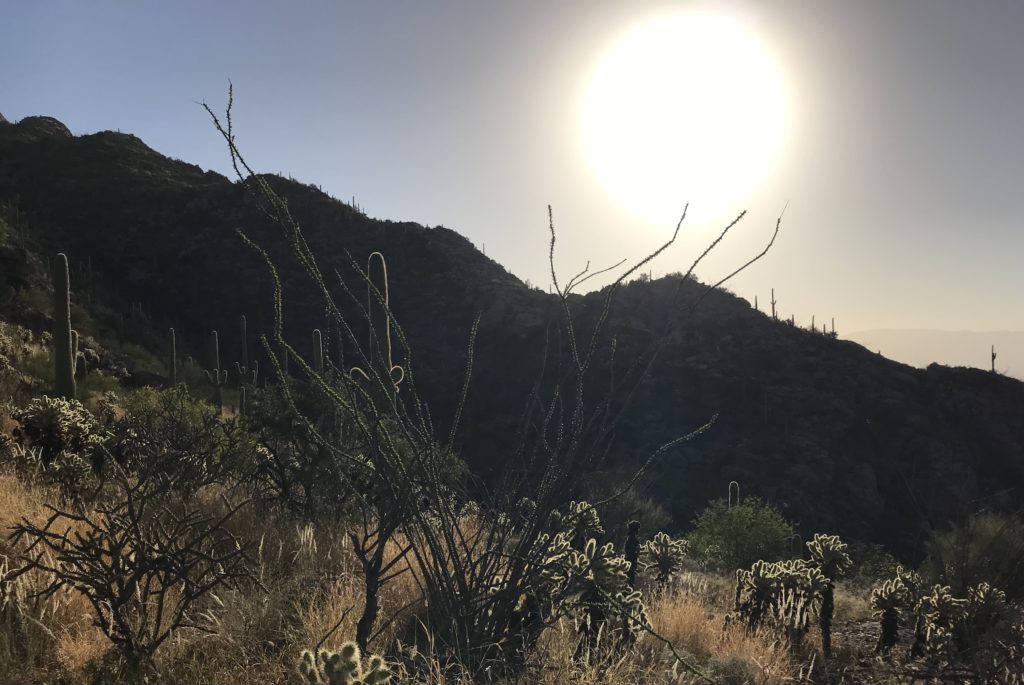
I did get a sense of the the oppressive heat in late September, though. Even a casual walk to a restaurant a block and a half away felt like an ordeal. As much as I enjoy sunshine, I don’t think I would be able to tolerate that much sunshine.
The Food
Tucson is apparently recognized as a UNESCO city of gastronomy. While there might be enough great restaurants here to make the city worthy of this title, my personal luck of the draw had been mixed as best. Most of the food I had in Tucson could be classified as “decent but not memorable” with two notable exceptions: Tumerico and Mi Nidito.
Tumerico
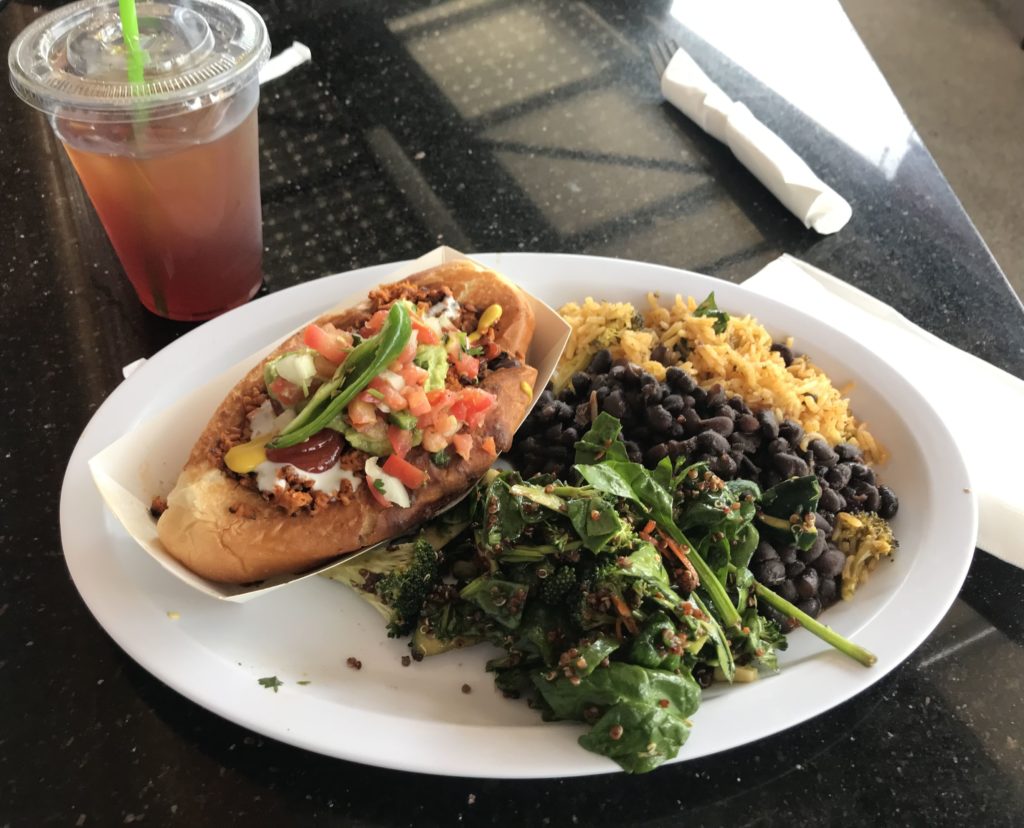
As someone who’s mostly vegetarian (I eat meat on rare occasions) Tumerico was just a place that I had stumbled upon when ordering on Postmates. I didn’t have high expectations for the place as often vegetarian substitutes for meat (with some notable exceptions) can be underwhelming. This was not the case with Tumerico, whose verde enchiladas with marinated jackfruit in tomatillo verde sauce is a must try should you be in town. All the sides: the broccoli salad, the black beans, and the rice had a robust yet subtle flavor. Highly recommended.
Mi Nidito
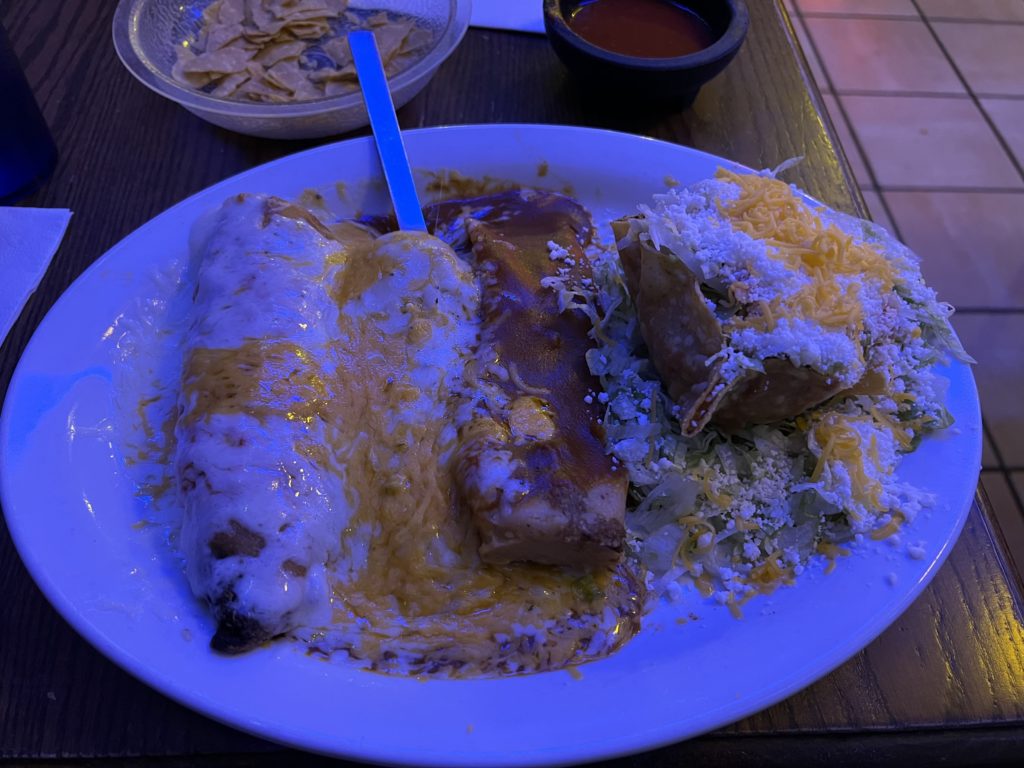
Mi Nidito, or “The Little Nest” is a Mexican restaurant that has been in the same family since 1952. Seeing as Tucson boasts 23 miles of the best Mexican Food, I had to try at least some of it. I chose Mi Nidito because it seemed like a Tucson institution, so much so that Bill Clinton had once dined there–the combo plate that they served him is now forever enshrined on the menu as the “El Presidente Plate”.
I did the touristy thing and ordered the famous combo and found it exceedingly mediocre. It was essentially on the same level of many Mexican chain restaurants that I had frequented in the Pacific Northwest. The combo was swampy mess of cheese with some generic sauces and flavorings that barely differentiated it from most Mexican chain restaurants. Perhaps Mi Nidito had been special at one time, but it’s obvious they’ve been coasting on their reputation for a while now.
Since Bill Clinton is now a vegan, perhaps he should try Tumerico the next time he’s in town.
Limescale
The first time I boiled water in Tucson I thought there was something wrong with it–I saw unsettling particles floating in the surface, making me think that it was contaminated. A quick google image search made me realize that it was just limescale: an oversaturation of minerals in Tucson’s unusually hard water. It leaves behind a chalky residue on everything. It’s not harmful at all, but it looks really gross. Limescale is not filterable using a conventional Brita filter and will leave an unsightly white crust in electric kettles. If I lived here long term, I’d probably end up getting a reverse osmosis filter.
Harrowing Left Turns
Of all the cities I had visited on my trip Tucson had the second worst driving experience (the worst was New Orleans). For a city spread across a desert valley, you’d think the roads would be laid out in a straightforward manner. Instead, you get a byzantine tangle of four lane roads and highways where more often than not I found myself just missing a turn or an exit I needed to take, which invariably resulted in a 5 to 10 minute adventure just to get back where I had been. Making left turns across several lanes without the aid of a traffic light is a common and harrowing experience. Most times I chose not to take these turns and opted to go with the traffic to take a u-turn down the way.
Miniscule Downtown
While living in the desert suburbs certainly is peaceful, I’ve always been more partial to living in a place with more activity. So I spent a weekend to investigate downtown Tucson to see what it had to offer. I started my day at the Pima County Courthouse, which could arguably be called the city center. From there I wandered through downtown, 4th avenue, and went all the way to the University of Arizona campus, poking into bookstores and random shops along the way.
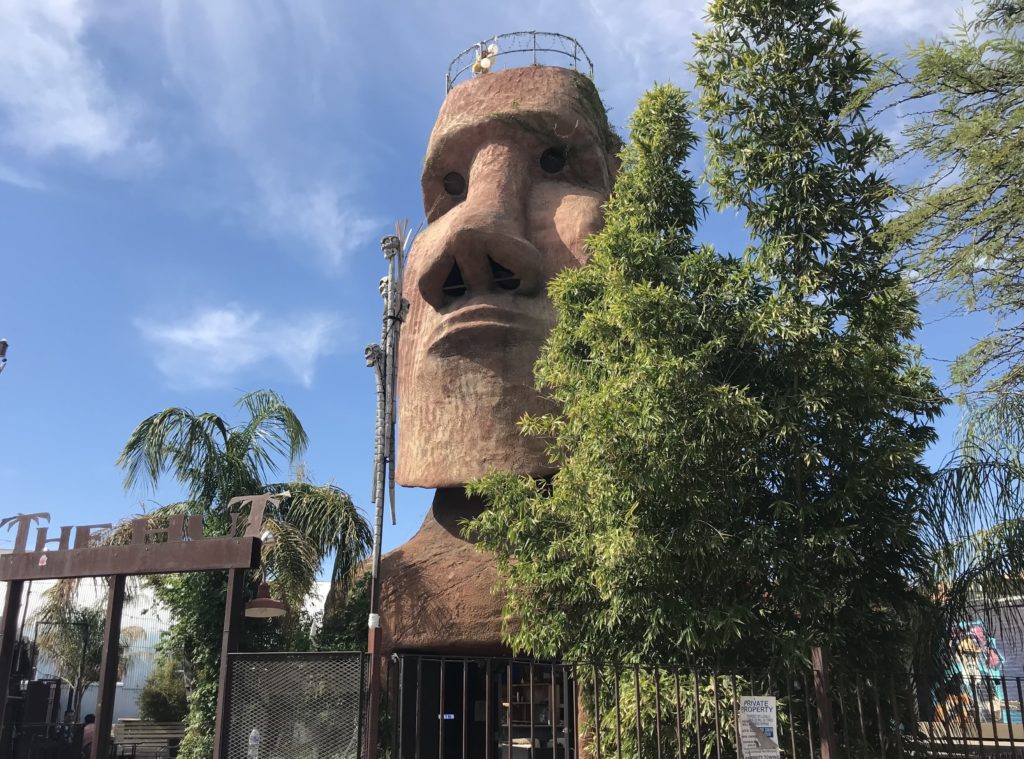
Downtown is alright, but it’s pretty small. It took me about half a day to see all there was to see in the walkable area. Once you get out of downtown proper Tucson gets ugly pretty quickly and there’s really nothing to see but strip malls and parking lots. I enjoyed exploring it but after my one visit I didn’t really feel compelled to visit the downtown area again.
Saguaros
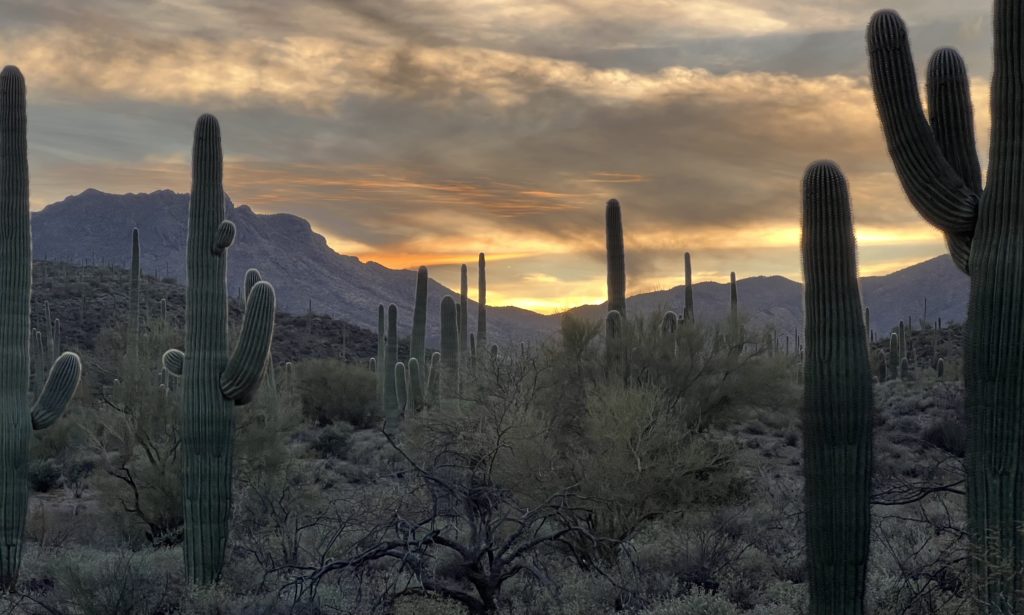
To the Tohono O’odham, or “People of the Desert”, Saguaros are a symbol of life. They are the bringers of the monsoons which flood and bring refreshment to the the dry land. Once a year, as part of a ceremony to ensure that the rains will come as expected, the fruits of the Saguaro are collected in jars, mashed and then boiled into a syrup. The people would then sing to the jars as part of a ceremony that transforms that syrup into wine. There’s a poetic symmetry to it: if wine makes someone want to sing, then song must be the missing ingredient in syrup to transform it into wine. When the wine is made they would gather as a community and drink and sing and dance and in response the rains would come to replenish the desert.
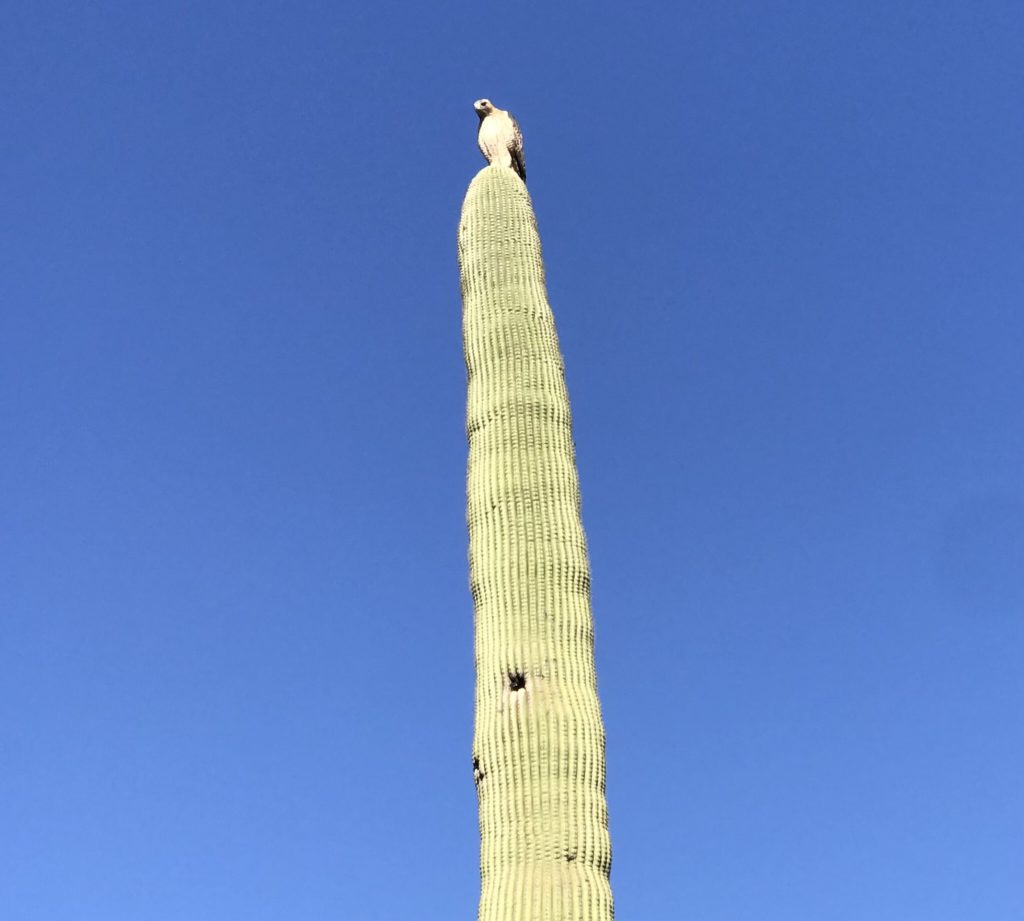
That the saguaros would stand strong against the relentless heat of summer seems like a promise from their creator that the rains will come. This must have been a source of great comfort to the people of the desert, a reassuring symbol of the resilience of life.
The Saguaro bring a sense of vibrancy, majesty, comfort, and whimsy to the desert and the city of Tucson, and to me the presence of this one plant adds more to the character of the city than any other feature. The Saguaro is iconic, and any depiction of the city of Tucson without one would simply be incomplete.
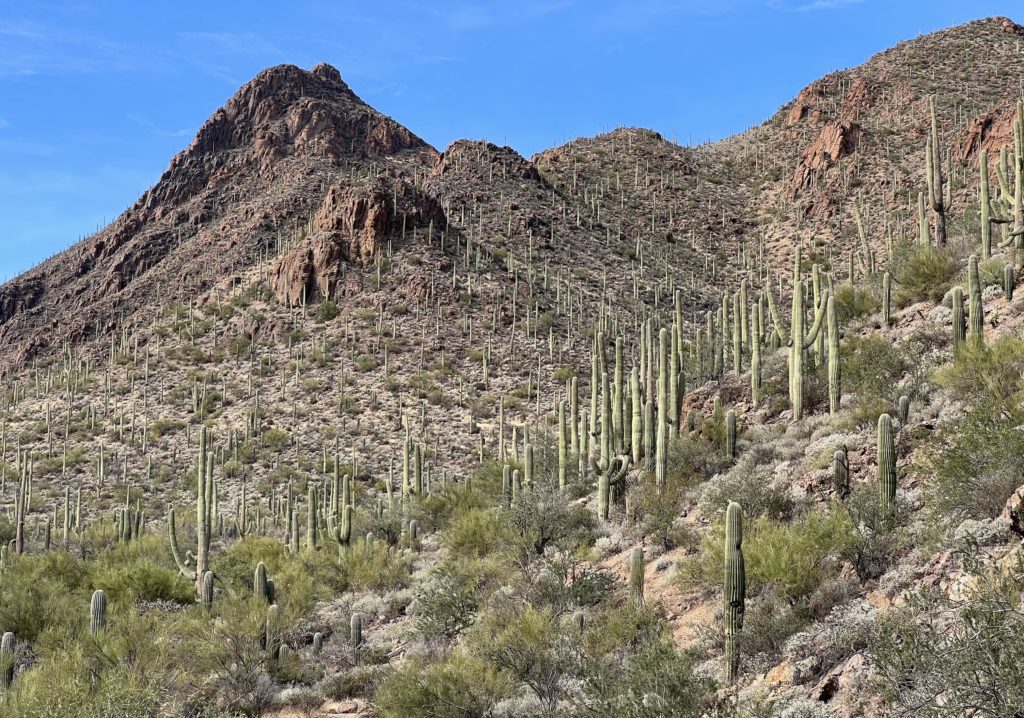
The Día de los Muertos “All Souls Procession”
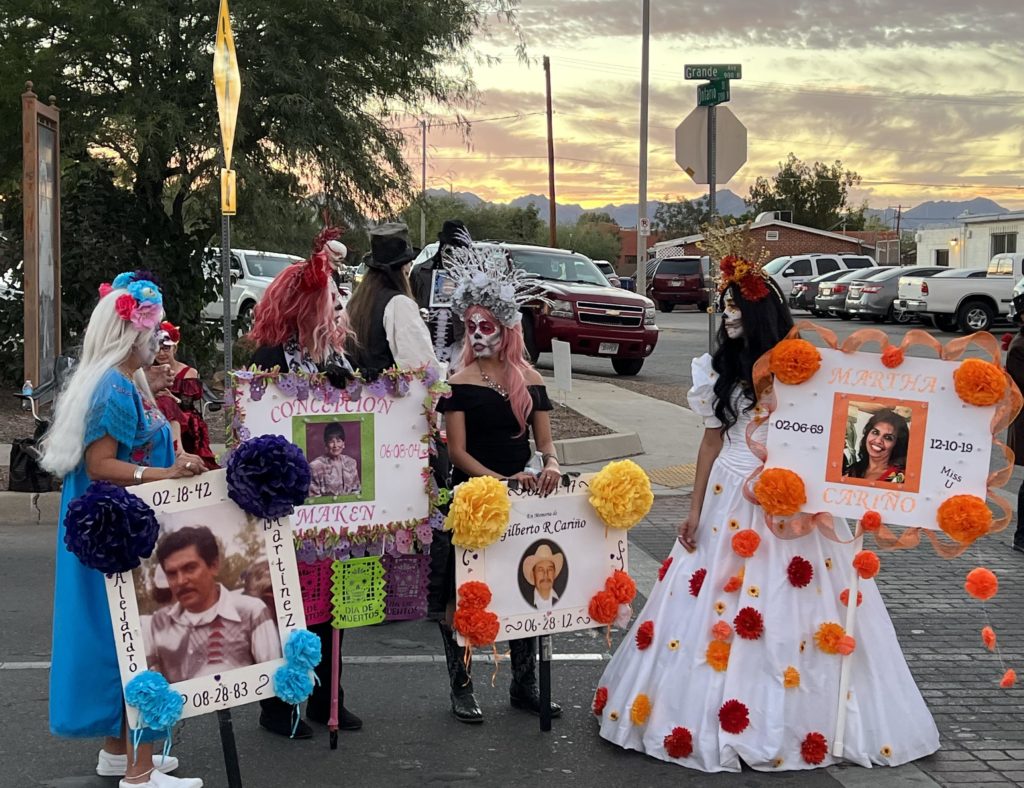
Many cities, even those that don’t have a large hispanic population, have a Día de los Muertos celebration commemorating the day when one’s lost relatives come to visit one’s families. The one that I had a chance to attend in Tucson was special and something that I won’t forget. After years in quarantine and much loss, it was in 2021 that we could truly gather and commemorate those whom we had lost over those two years. This celebration felt especially solemn and also especially joyful.
Here’s a video I stitched together of the procession:
Although this was a primarily hispanic tradition, I appreciated that other traditions were represented here as well. As a half Japanese person, I was particularly touched by the Japanese taiko players at the vanguard of the procession who were there celebrating the day much in the way they would celebrate Obon, a series of three days in August where dead relatives would come and visit their families.
The Verdict
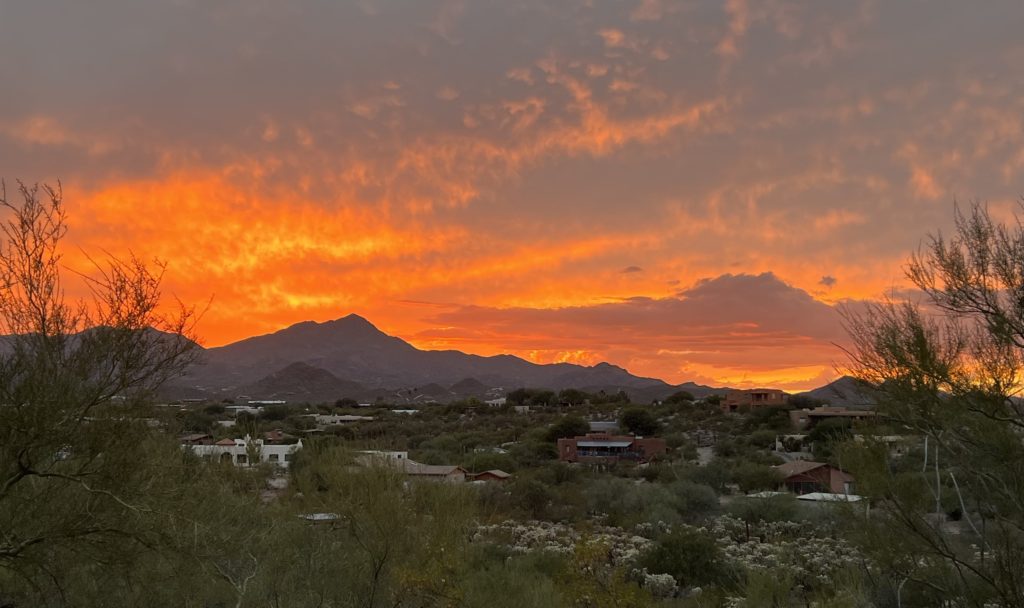
Tucson is an expansive checkerboard of urban blight and patches of dry dirt surrounded by a beautiful saguaro forest. In an increasingly cosmopolitan world, Tucson still retains a lot of its provincial character–which to me is a mixed blessing. I enjoyed the time that I spent out in the desert guest house as it felt like a wilderness refuge while still having worldly conveniences nearby. I didn’t find myself going downtown often as driving there was a bit of an ordeal, and after visiting once I didn’t really feel compelled to go again.
Overall I felt Tucson that was a mixed bag. I didn’t hate my stay there, but the city seemed too remote and less connected to the world than I would have prefered. Perhaps some day in my later years when I just want to live in a quiet place I may go back, but I knew that I had to continue my journey and see what other cities had to offer.
I give Tucson, AZ three stars.
Next stop: San Antonio
—
Further Reading
I highly recommend this paper on Traditional Saguaro Harvest by members of the anthropology by the university of Arizona. Their findings on the Tohono O’odham and the saguaro wine rain dance ritual greatly informed my writing on Saguaros above.
Leave a Reply